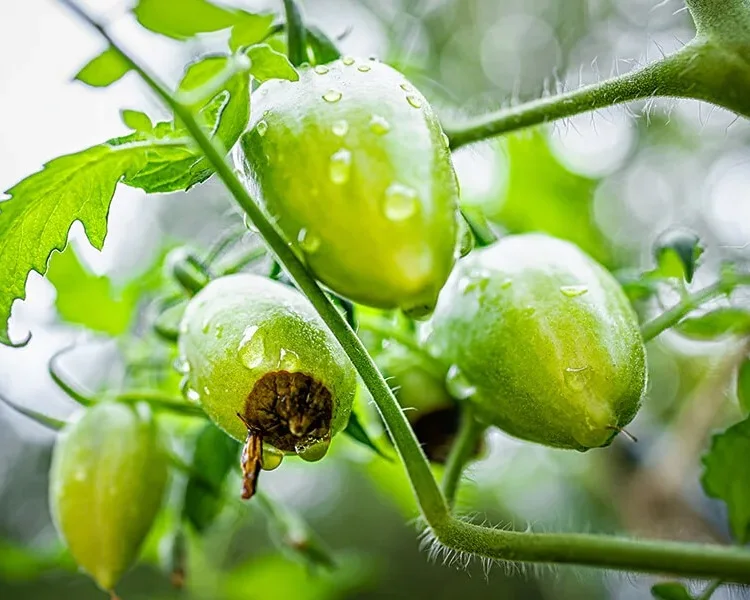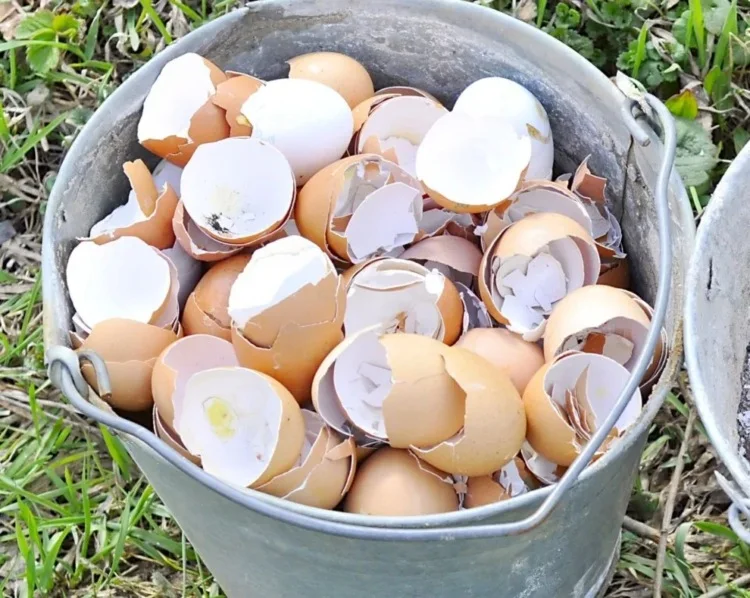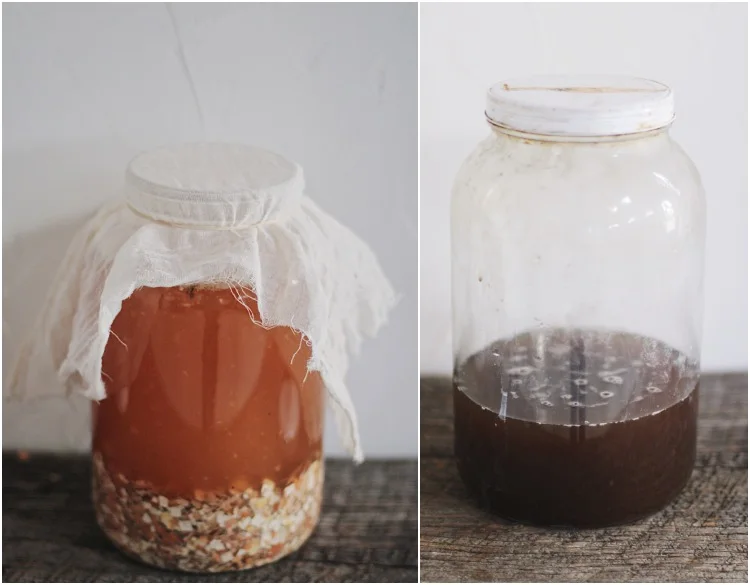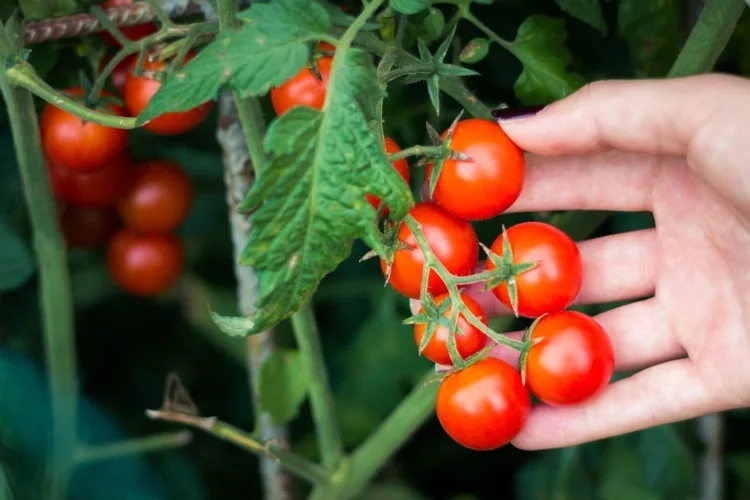Calcium and magnesium are two important micronutrients that support tomato growth and promote fruit formation. When calcium deficiency occurs, blossom end rot is the result – blossoms and fruit develop large, black spots and the plant wilts. In today’s post, we’ll explain how you can make your own calcium fertilizer for tomatoes and use it properly in your garden.
Calcium Fertilizer for Tomatoes: What Does the Natural Fertilizer Do?
Calcium activates the enzymes in plants that promote fruiting. In nutrient-poor soils and especially often in plants in containers or raised beds, where the volume of soil is small, nutrient deficiency can occur quickly. This is very dangerous, especially for tomatoes /strong growers/. Calcium deficiency can cause blossom end rot – the blossoms fall off, fewer fruits are borne and they ripen very slowly. Typical of the deficiency are the large black spots on the tomatoes and wilted shoots. The plant can only transport calcium from the roots to the leaves and flowers – if there is a calcium deficiency, the shoots become soft and wilt.
Magnesium is an important mineral that aids plants in chlorophyll synthesis and nutrient transport. The plant can transport magnesium from the roots to the leaves and – if necessary – back again. If there is a magnesium deficiency, the old leaves will turn yellow first, followed by the shoots.
Also read: Which Plants Can Be Watered with Milk? Why? 5 Unexpected Indoor Species That Need More Calcium
In What Cases Do You Need Calcium Fertilizer?
Calcium and magnesium are normally found in normal garden soil with pH above 7. Hard tap water also contains calcium and/or magnesium. Normally, a deficiency occurs in potted plants and in plants in raised beds or greenhouses – in other words, anywhere where the volume of soil is limited. If, in addition, you water the plants with rainwater or with filtered tap water, then a deficiency can quickly develop.
Make Your Own Calcium Fertilizer for Tomatoes: Ingredients and Mixing Ratio
The next fertilizer recipe is ideal for potted plants, tomatoes with black spots in a greenhouse or raised bed, and for outdoor plants in poor soil.
The necessary ingredients:
- Epsom Salt – a mineral containing 10% magnesium and 14% sulfur. You need 1/3 tsp or about 0.05 oz/1.5g of Epsom Salt per 0.9 gallons/3.5 liters of water.
- Egg shells contain calcium carbonate. When the eggshells are dipped in apple cider vinegar, they release the calcium carbonate.
- You still need naturally cloudy apple cider vinegar with 5% acidity.
The mixing ratio is very important – add too much vinegar and you can damage the plants. If you add too much Epsom Salt, then it will stick to the clay in the soil and can form a layer impermeable to water.
However, the mixing ratio can vary and you have to adjust the ingredients accordingly. The fertilizer is prepared as follows.
First put eggshells (from 10 eggs) in a bucket and then pour in apple cider vinegar (about 10 oz/300 ml). The vinegar should completely cover the eggshells. If this is not the case, you have to add enough vinegar to cover the eggshells completely. Then it’s time to wait. First you will notice foam on the surface. This foam forms when the calcium is released. After about 48 hours, the fertilizer should no longer smell of vinegar. The majority of the eggshells should be completely dissolved – but you can still see eggshell residue. If the egg shells have completely dissolved, you have used too much vinegar. Simply add 1-2 eggshells to the fertilizer and wait another 48 hours. Then strain the fertilizer and add about 1/4 tsp of Epsom salt for the tomatoes. Mix well and then use it to fertilize the plants.
How Often to Fertilize the Tomatoes?
When fertilizing, you don’t depend on the tomatoes, but above all on the soil values. It is therefore advisable to first take a soil sample and have it tested in a laboratory. If you are sure that it is blossom end rot, you can fertilize and water the tomatoes as follows:
- Apply the fertilizer 2-3 times over the next few days. First, after watering, give each plant 3,5oz/100 ml of liquid fertilizer and then fill the rest in a spray bottle and spray the leaves with it.
- Keeping the soil moist is very important for the plants to absorb the fertilizer. Especially when it is hot, the soil dries up quickly and the plants can no longer properly absorb the nutrients.





